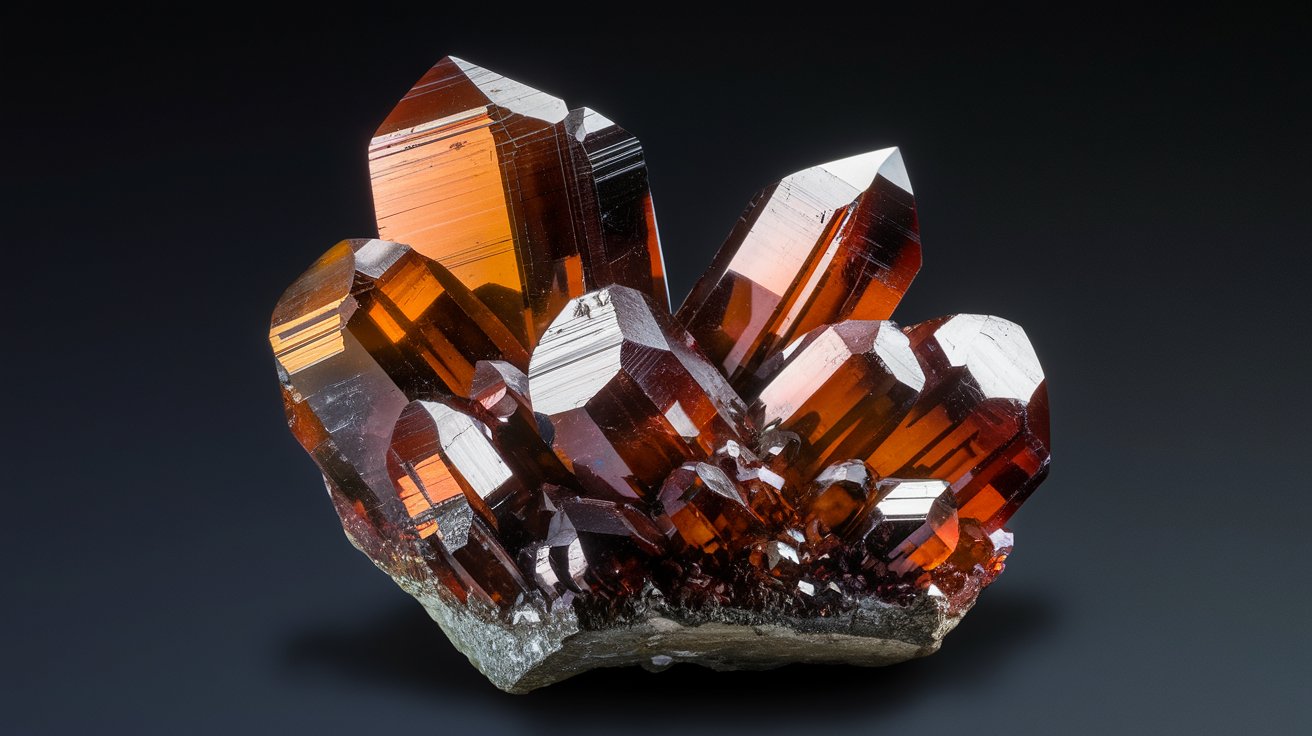
Coccinite is a rare mineral that has intrigued scientists and collectors alike. Found in only a few locations worldwide, this mineral is known for its striking yellow color and unique properties. But what exactly makes Coccinite so special? From its chemical composition to its geological formation, there are numerous fascinating aspects to explore. Whether you're a budding geologist or just curious about the natural world, learning about Coccinite can be both educational and exciting. In this post, we'll delve into 30 intriguing facts about Coccinite that will give you a deeper appreciation for this extraordinary mineral. Buckle up for a journey through the world of Coccinite!
Key Takeaways:
- Coccinite is a rare red mineral with toxic mercury content. It's prized by collectors and used for scientific research, but must be handled with extreme care due to its toxicity.
- Found in specific mercury deposits, coccinite has no practical uses due to its toxicity. It's mainly used for educational purposes and provides insights into mercury mineralogy and history.
What is Coccinite?
Coccinite is a rare and fascinating mineral. Its unique properties and intriguing history make it a subject of interest for geologists and mineral enthusiasts alike. Let's dive into some intriguing facts about this mineral.
-
Coccinite is a mercury iodide mineral. It has the chemical formula HgI₂.
-
This mineral was first discovered in 1866. It was found in the Idrija mercury mine in Slovenia.
-
Coccinite is named after the Greek word "kokkinos," meaning red. This name reflects its striking red color.
-
It forms in the oxidation zones of mercury deposits. These zones are areas where mercury ores are exposed to oxygen and water.
-
Coccinite is very soft. It has a Mohs hardness of just 2, which means it can be scratched by a fingernail.
-
This mineral is highly toxic. Handling it requires extreme caution due to its mercury content.
-
Coccinite is often found in association with other minerals. These include cinnabar, calomel, and native mercury.
-
It has a resinous to adamantine luster. This gives it a shiny, almost glass-like appearance.
Physical Properties of Coccinite
Understanding the physical properties of coccinite can help in identifying and studying this mineral. Here are some key characteristics.
-
Coccinite has a specific gravity of 6.36. This makes it quite dense compared to many other minerals.
-
It is translucent to opaque. Light can pass through thin slices of coccinite, but not through thicker pieces.
-
The mineral has a tetragonal crystal system. This means its crystals form in a shape that resembles a four-sided prism.
-
Coccinite can exhibit pleochroism. This means it can show different colors when viewed from different angles.
-
It has a perfect cleavage in one direction. This means it can easily split along one plane.
-
The streak of coccinite is yellow. When rubbed on a streak plate, it leaves a yellow mark.
-
Coccinite is soluble in water. This is unusual for many minerals and adds to its unique properties.
Occurrences and Locations
Coccinite is not found everywhere. Its occurrences are limited to specific regions and conditions. Here are some notable locations.
-
The Idrija mine in Slovenia is the most famous source. This is where coccinite was first discovered.
-
It has also been found in the Almaden mine in Spain. This is another significant mercury deposit.
-
Coccinite occurs in the mercury mines of California. These include the New Almaden and New Idria mines.
-
The mineral has been reported in the mercury deposits of Texas. Specifically, in the Terlingua district.
-
Small amounts of coccinite have been found in Russia. These occurrences are less well-documented.
-
It has also been identified in the mercury mines of Mexico. These include the mines in the state of Querétaro.
Uses and Applications
Due to its rarity and toxicity, coccinite is not widely used. However, it has some specific applications and significance.
-
Coccinite is primarily of interest to mineral collectors. Its striking color and rarity make it a prized specimen.
-
It is used in scientific research. Studying coccinite can provide insights into mercury mineralogy and geochemistry.
-
The mineral has historical significance. It helps in understanding the history of mercury mining and usage.
-
Coccinite can be used in educational displays. Museums and educational institutions use it to teach about minerals and geology.
-
It has no significant industrial applications. Its toxicity and rarity limit its practical uses.
Safety and Handling
Given its mercury content, coccinite must be handled with care. Here are some important safety considerations.
-
Always use gloves when handling coccinite. This prevents direct skin contact with the toxic mineral.
-
Store coccinite in a well-ventilated area. This reduces the risk of inhaling any mercury vapors.
-
Avoid breaking or crushing coccinite. This can release mercury particles into the air.
-
Dispose of coccinite properly. Follow local regulations for disposing of toxic minerals.
The Fascinating World of Coccinite
Coccinite, a rare and captivating mineral, has intrigued scientists and collectors alike. Its vibrant red color and unique properties make it a standout in the mineral world. Found primarily in Bolivia, this mineral is composed of mercury iodide, giving it its striking appearance. Despite its beauty, coccinite is highly toxic due to its mercury content, requiring careful handling.
Collectors prize coccinite for its rarity and aesthetic appeal. However, its toxicity means it must be stored and displayed with caution. This mineral's formation process, involving volcanic activity and hydrothermal veins, adds to its mystique.
Understanding coccinite's properties and origins not only enriches our knowledge of geology but also highlights the delicate balance between beauty and danger in nature. Whether you're a seasoned collector or a curious learner, coccinite offers a glimpse into the Earth's hidden treasures.
Frequently Asked Questions
Was this page helpful?
Our commitment to delivering trustworthy and engaging content is at the heart of what we do. Each fact on our site is contributed by real users like you, bringing a wealth of diverse insights and information. To ensure the highest standards of accuracy and reliability, our dedicated editors meticulously review each submission. This process guarantees that the facts we share are not only fascinating but also credible. Trust in our commitment to quality and authenticity as you explore and learn with us.


